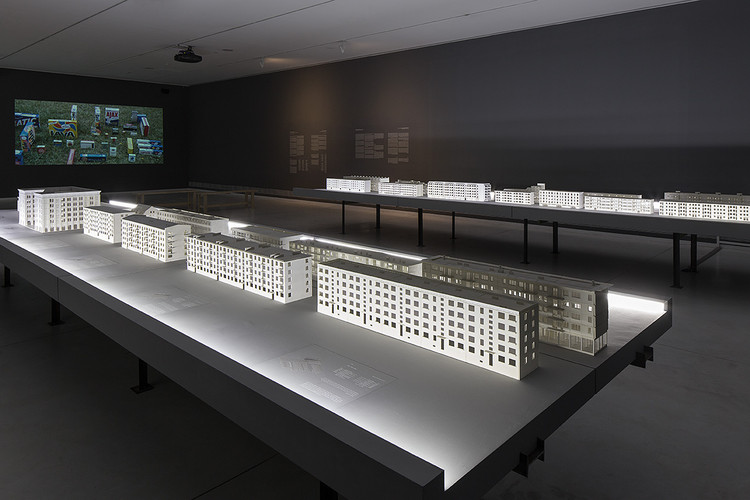
Between 1945 and 1981 around 170 million prefabricated (prefab) residential units were constructed worldwide. Now, as part of a study undertaken by Pedro Alonso and Hugo Palmarola of the Pontificia Universidad Católica de Chile between 2012 and 2014, an exhibition at the Tel Aviv Museum of Art features 28 large concrete panel systems from between 1931 and 1981. In so doing, it explores a transnational circulation of these objects of construction, "weaving them into a historical collage of ambitions and short-lived enthusiasm for utopian dreams."
This show, curated by Meira Yagid-Haimovici, is an attempt to reveal "how architecture and urbanism was charged with historical, social, and political narratives, and how the modernist vision promoted the fusion of aesthetics and politics." The models, which are being exhibited as part of the Production Routes exhibition, seek to highlight the richness embodied in 'generic' architecture through the lens of prefab construction methods.

According to Yagid-Haimovici,"the peregrinations of these concrete panels serve as a litmus test indicative of how ideologies and mechanisms of power reached across continents and oceans." During the 1980s, as dominant ideologies and political blocks began losing their power, their global impact was replaced by that of market powers and international corporations operating in accordance with financial models. Private real-estate entrepreneurs backed by investment banks came to promote large-scale projects centred on the development of generic housing, generic offices, and generic cities, resulting in an accelerated process of global homogenisation. As a result, contemporary architecture appears more uniform than during the Modernist age. This exhibition asks whether or not there is "an optimistic perspective from which one can examine these generic developments? Is there a chance for oppositional forces working against hegemonic powers?"

This historical “scaffolding” is represented in the exhibition by the typological study which expands the limits of the term “prefabricated building” and exemplifies its particularity by means of models produced using 3D printers. This study is juxtaposed with three additional perspectives: the artist Amie Siegel’s seemingly disinterested gaze, which presents a sampling of the generic New York architecture firms in which today’s global, generic architecture is produced. In this film, the sites where means of production and export are used to preserve hierarchies that shape the use of resources and the operation of markets and political regimes are revealed to reflect the structure of a factory or industrial assembly line. Stephan Trüby presents an interview with Friedrich Mielke, who developed the esoteric field of scalalogy, or the “science of stairs.” This rare historical document explores the social history of stairs and the relations between people and stairs. Teri Wehn Damisch and Jean-Louis Cohen present a fascinating, dialectic archival document about the hopes tied to architectural modernism in France, the illusions to which it gave rise, and their subsequent rupturing.
This exhibition does not aim to illuminate the past from the viewpoint of the present or vice versa. Rather, it constitutes a modest attempt to draw closer together seemingly distant phenomena, so that we may attend to their shared resonances.



Production Routes at the Tel Aviv Museum of Art is on display until the 2nd May 2015.

